The simulation shows the far reaching effect of the Tonga eruption. The animation also demonstrates how waves connect the atmosphere and the space environment. Movies Captions only Narration only https://vastgallery.s3.us-west-1.amazonaws.com/Weather/TongaEruption/v6_FinalBeforeCaptions_withVoiceOver.mp4 Science Credits Han-Li Liu Computational Modeling Han-Li Liu, Peter Lauritzen, Francis Vitt, Steve Goldhaber Computational Resources NWSC/Cheyenne; NASA/Pleiades Visualization and Post-production Matt Rehme, Sarah Vitt…
Read moreCategory: Models
Leveraging Variable Resolution Capabilities in the Community Earth System Model (CESM) – Greenland

The System for Integrated Modeling of the Atmosphere (SIMA) has rolled out two new variable-resolution configurations with regional refinement over the Arctic and Greenland*. This is a 3D visualization of a simulation using the Greenland grid, which refines the big ice sheet with 1/8˚ grid resolution. The visualization shows that storms traverse the refinement region…
Read moreWeather Systems in a World without Land or Seasons
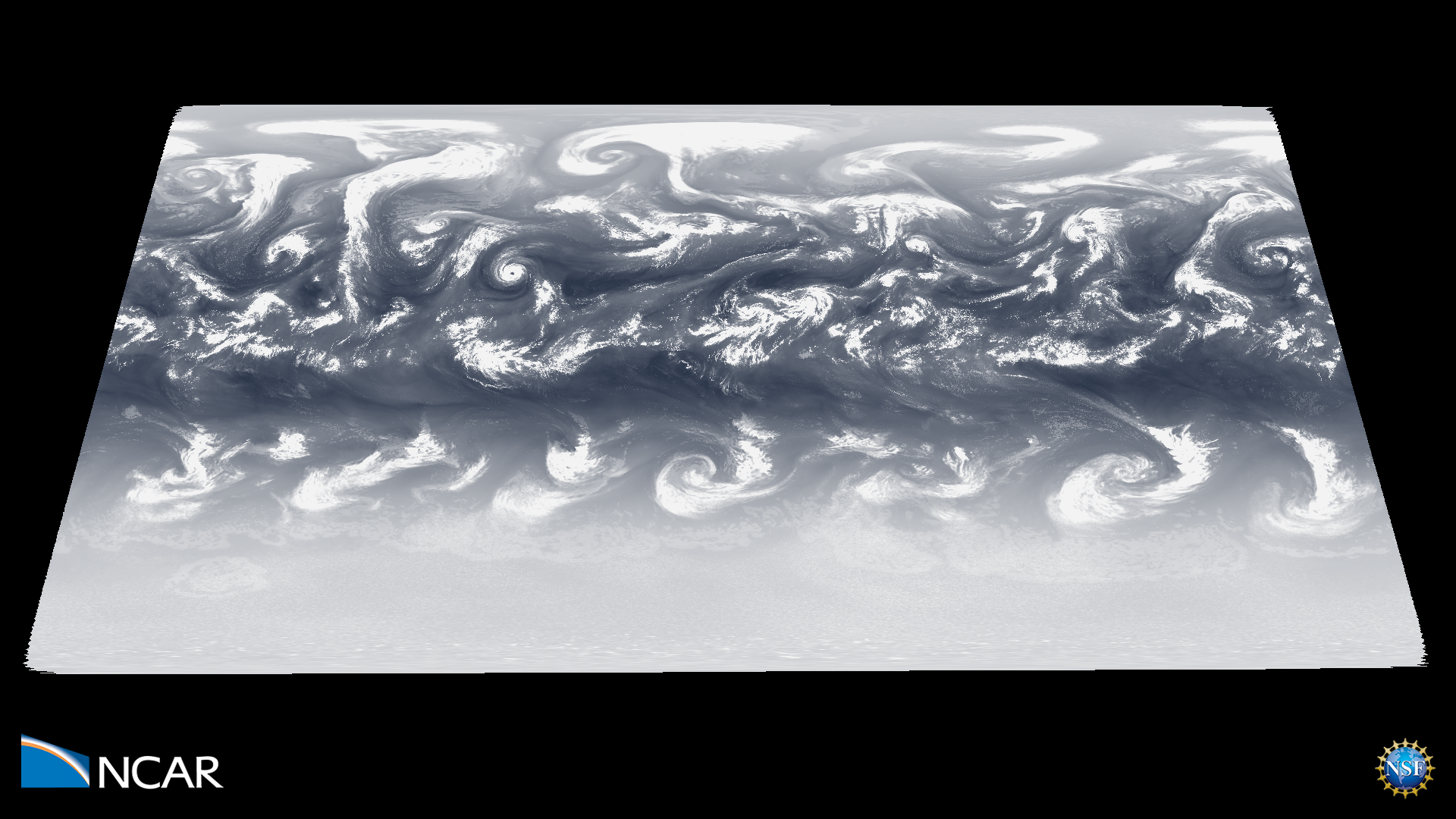
Aquaplanet simulations—as their name suggests—are idealized representations of Earth where the planet is covered entirely by water. The absence of continents, while unrealistic, provides a clean laboratory where weather systems can develop, evolve, and dissipate as they would do over Earth’s oceans. This kind of simulation is, therefore, useful for learning about the fundamental processes…
Read moreOcean Surface Boundary Layer Turbulence Under Hurricane Irene

Simulated ocean surface boundary layer turbulence under Hurricane Irene (~9:30 UTC, August 28, 2011) entrains cold bottom water that cools the sea surface and weakens the hurricane as it makes landfall on the New Jersey continental shelf. Large-aspect-ratio coherent structures that modify the evolution of the mean sea-surface temperature are highlighted in a 2 km by 2…
Read moreHRRR Smoke in the Summer of 2020
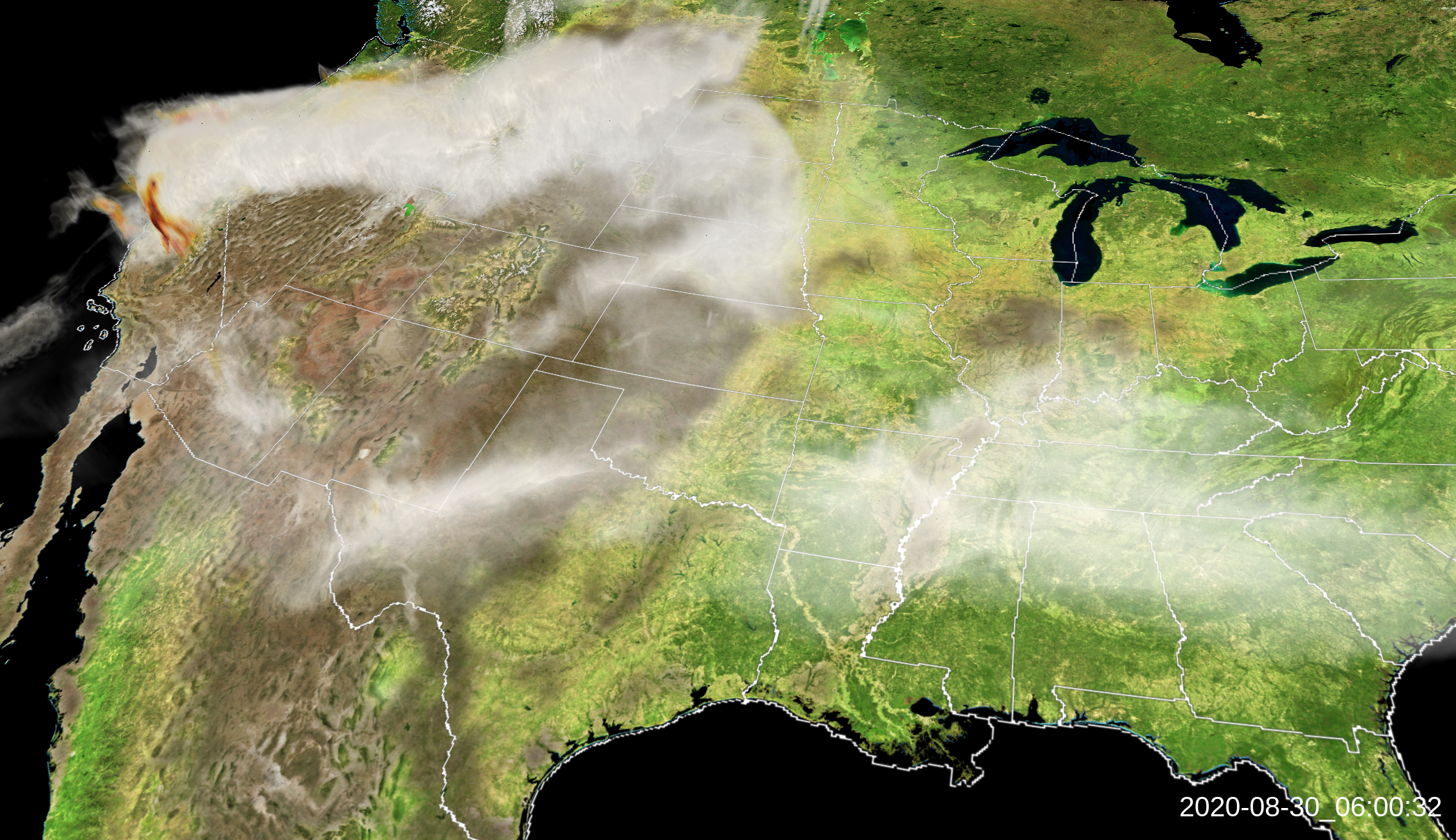
These volume renderings show the simulated dispersal of smoke generated with the High Resolution Rapid Refresh (HRRR) model. This visualization emphasizes the Western wildfires during the last days of August, 2020. Science credit to Ka Yee Wong and Ravan Ahmadov, of NOAA’s Global Systems Laboratory. Movies Movie File (430 KB, MP4) Images Science…
Read moreWater Vapor Content of the Current and Future Climate of North America
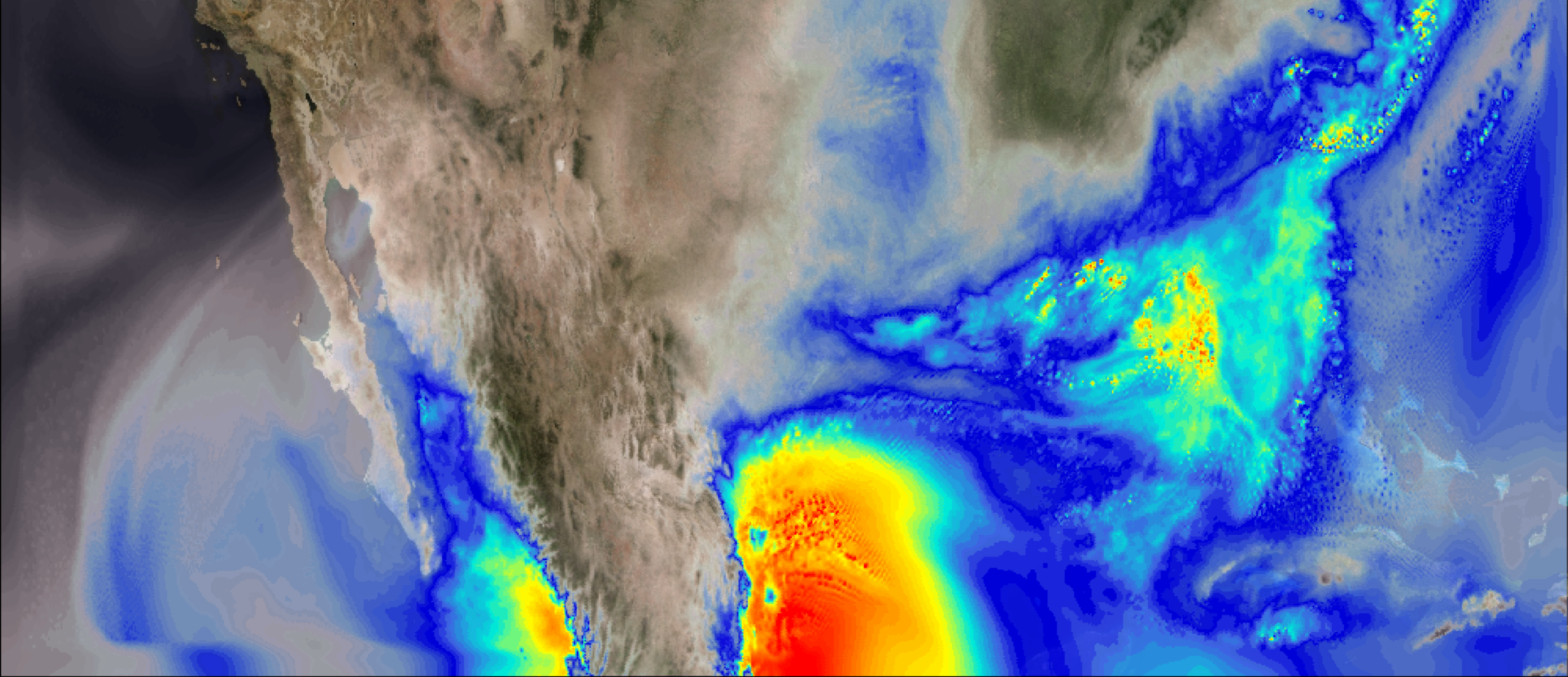
This visualization shows column integrated water vapor content over North America for the period April to June 2011, during which time one of the most destructive and deadliest tornado outbreaks to impact the United States occurred (April 25-28). Side-by-side comparison of the simulations show greater water vapor content in the simulated future climate, which can…
Read moreF5 Tornado in CM1
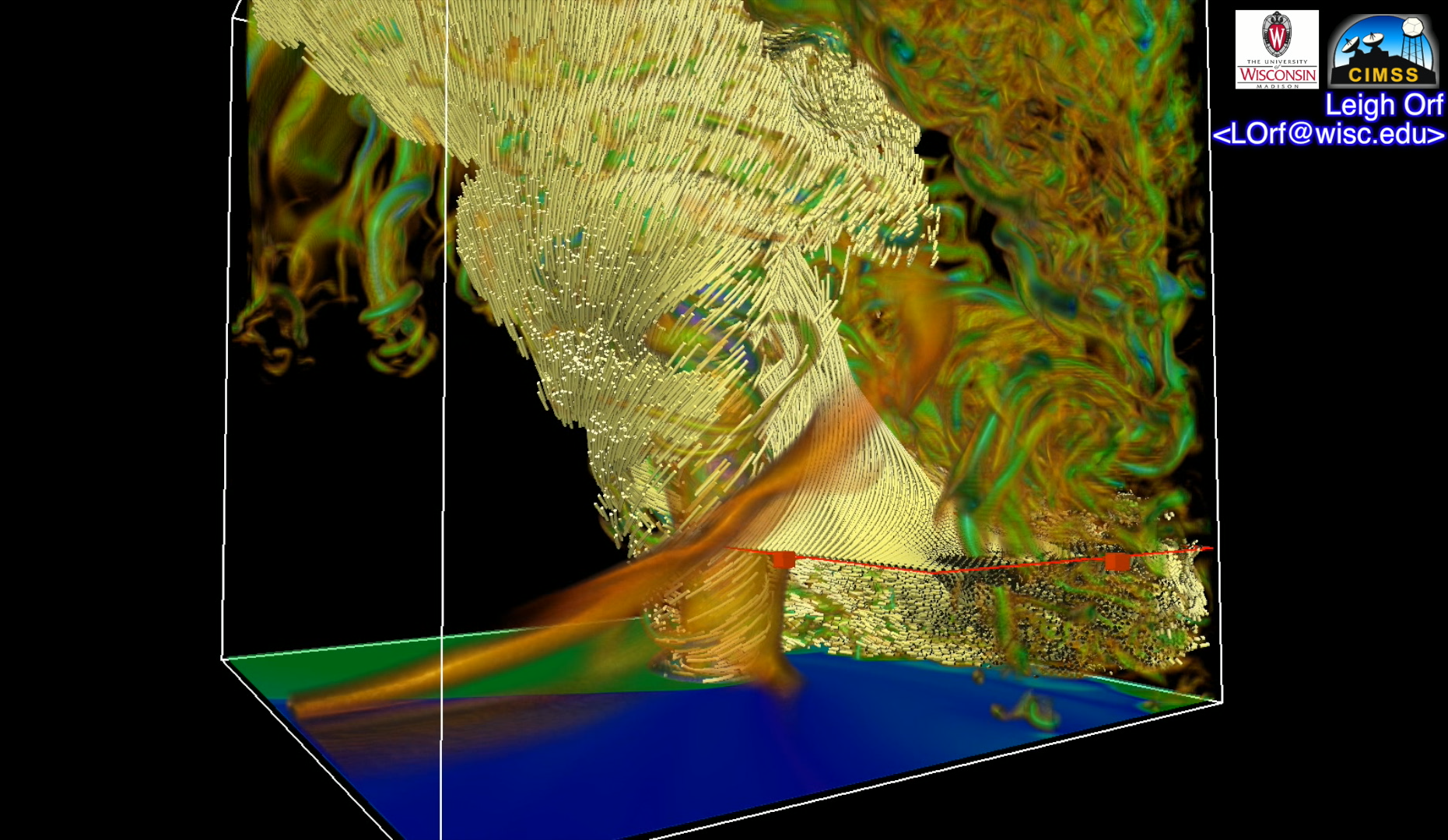
A simulation of an F5 tornado produced by Cloud Model 1 (CM1). Movies Quicktime Movie File (1920×1080, 2.57 GB) Images Science and Visualization Credits Leigh Orf, University of Wisconsin Madison. Model CM1. Visualization Software VAPOR
Read morePresent and Future Climate in a Global Model
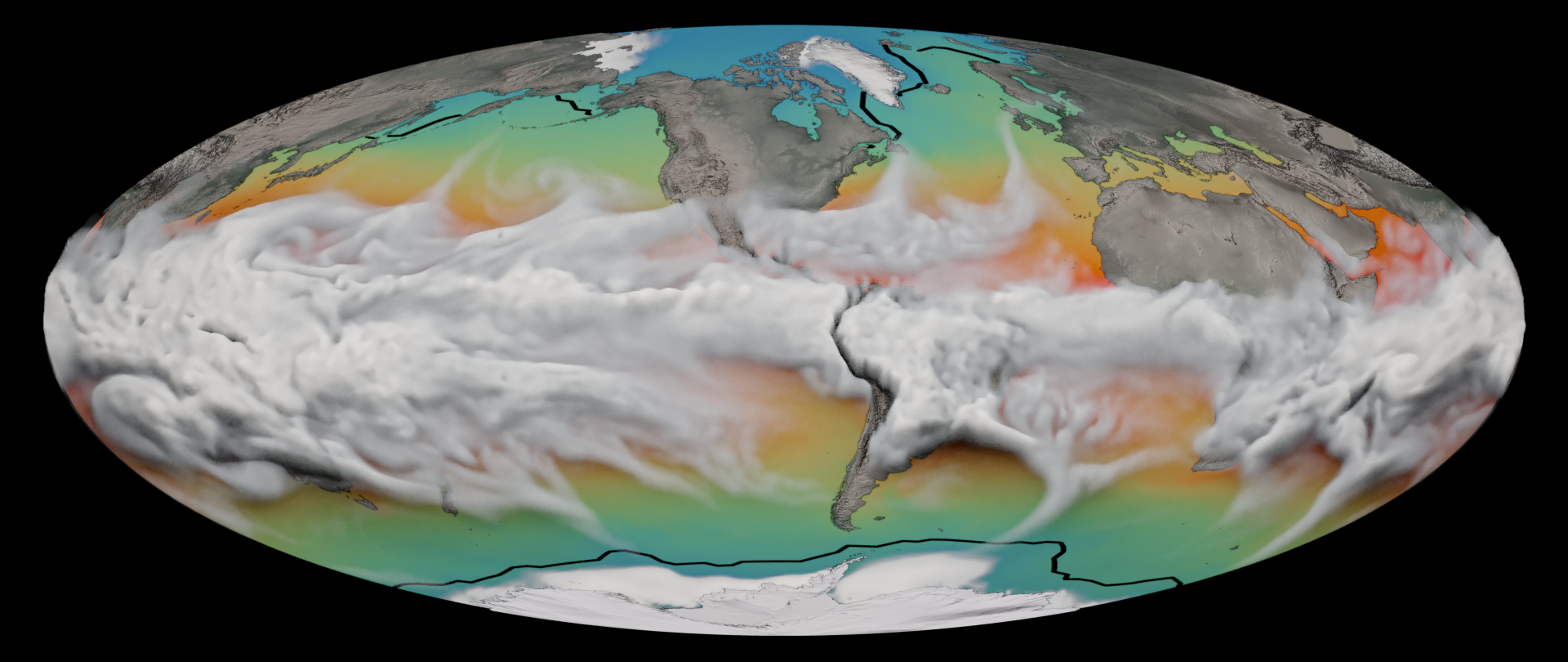
This visualization shows a CESM1 model comparison between a present day (1990) and a future (2090) simulation using a business-as-usual or high emissions scenario, called RCP8.5. Clouds represent six-hourly time steps of total water vapor for one year. Technically speaking, this is the CESM1 model variable, TMQ, defined as the total precipitable water (vertically integrated)…
Read moreClimate Change: Precipitation
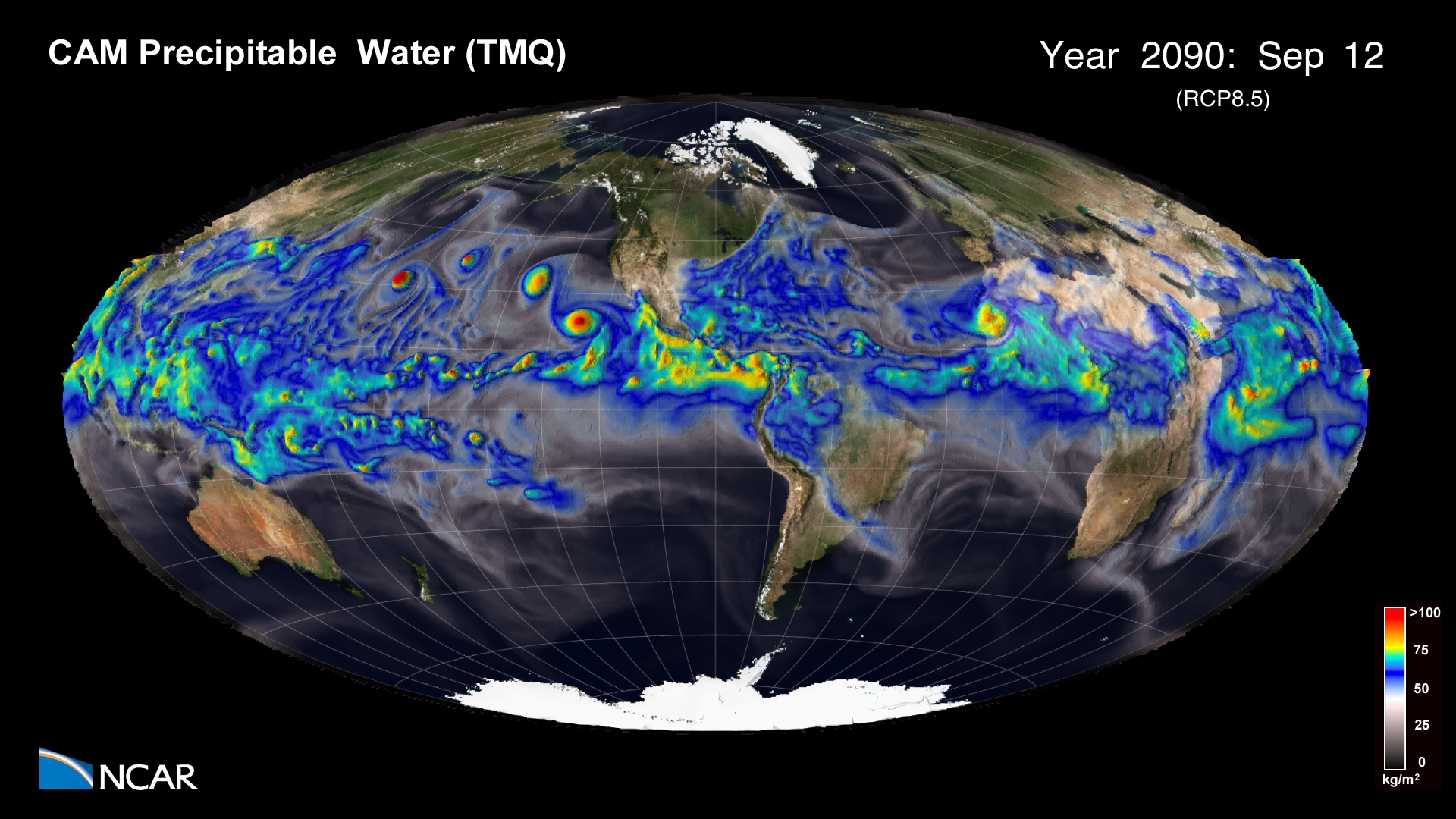
This simulation shows a comparison between present day (1990) and future (2090) precipitable water in the Earth’s atmosphere using an RCP8.5 emissions scenario. Movies Movie File (.mov, 1920×1080, 236MB) Images Science Credits This simulation was made possible because of the large number of individuals both from within NCAR and the many outside collaborators who have…
Read moreClimate Change: Temperature Anomalies

A comparison between present and future (RCP8.5) surface temperature anomalies. A 3-day smoothing has been applied to the output to dampen day to day variability. Movies Movie File (.mov, 118MB, 1920×1080) Images Computational Modeling Nan Rosenbloom and Gary Strand (NCAR/CGD) Visualization and Post-production Tim Scheitlin and Matt Rehme (NCAR/CISL) Model CESM Visualization Software NCAR Command…
Read more